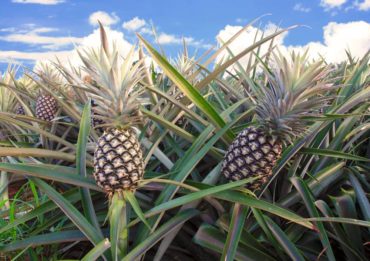 While it is the responsibility of the U.S. of Agriculture (USDA) to ensure food safety, the agency’s broad guidelines can fall short of the minute details many consumers desire. Also, due to the size and workload of the USDA, reports on the safety of many food groups are few and far between. The last report the agency published on pesticides in fruits and vegetables was in 2011.
While it is the responsibility of the U.S. of Agriculture (USDA) to ensure food safety, the agency’s broad guidelines can fall short of the minute details many consumers desire. Also, due to the size and workload of the USDA, reports on the safety of many food groups are few and far between. The last report the agency published on pesticides in fruits and vegetables was in 2011.
As a result, organized watchdog groups such as the Organic Consumers Association, Organic Farmers Association and the Environmental Working Group have voluntarily accepted the task of testing and notifying consumers of their results regarding pesticides found in our food chain.
The Environmental Working Group (EWG) is a nonprofit organization made up of scientists, physicians, educators and writers who believe in keeping the citizenry informed on crucial environmental issues. The organization was co-founded 20 years ago by Ken Cook, who, according to EWG’s website, was a “principal architect of the 1985 farm bill that for the first time shifted U.S. farm policy from a narrow focus on maximum crop production to conservation of land, water, wetlands and wildlife.”
EWG has become the mouthpiece for updated information on pesticide contamination in the U.S. food chain. The USDA’s last posting on the subject was in 2011, while EWG updates its data reports every year.
As it is important to eat five to nine servings of fresh vegetables and fruits every day, health-minded consumers choose from the wide variety of organic produce when possible. When organic produce is not available or is out of reach price-wise, the next best choice is to choose from the EWG “Clean 15” list.
When purchasing from the “Dirty Dozen” list, rinse or wash thoroughly under running water or with an approved vegetable-washing product, if available. Please note: Sll testing on the following produce was done after four washings.
The 2017 list is as follows:
Clean 15
- Sweet Corn *
- Avocados
- Pineapples
- Cabbage
- Onions
- Sweet peas (frozen)
- Papayas *
- Asparagus
- Mangoes
- Eggplant
- Honeydew
- Kiwi
- Cantaloupe
- Cauliflower
- Grapefruit
Dirty Dozen
- Strawberries
- Spinach
- Nectarines
- Apples
- Peaches
- Pears
- Cherries
- Grapes
- Celery
- Tomatoes
- Sweet bell peppers
- Potatoes
For complete lists of pesticide-contaminated crops and those generally grown with a minimum of contamination or absorption, visit the EWG website, where you’ll find complete explanations of the type of contamination.
Consumers concerned about other environmental issues, such as the high cost of transporting produce, can consider eating foods harvest and stored seasonally in the region in which they live. Buying at farmers markets and co-ops, through CSAs (Community Supported Agriculture) or directly from farmer-producers provides other options. Purchasing directly from the producer also affords the option of finding out if the food is produced cleanly and sustainably.
* Some sweet corn and papaya grown in the United States is from GMO seed. Consumers wishing to avoid GMO products should buy organic varieties of these crops.
READ MORE IN THIS SERIES• Why Buy Organic? Part 1: Fruits and Vegetables
• Why Buy Organic? Part 2: The Dirty Dozen and the Clean 15!
• Why Buy Organic? Part 3: Top Reasons to Consider Buying Organic Meats and Poultry
• Why Buy Organic? Part 4: Seafood




























Comments